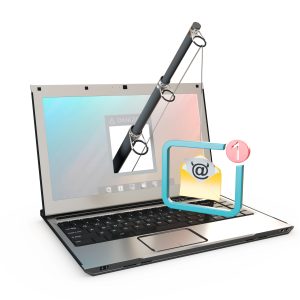Deployed via phishing emails, social engineering strategies and network penetration, malware can be hard to protect against and even tougher to clean from your systems. Capable of causing a wide range of havoc for IT pros, its impact could be nothing more than a nuisance slowing down operations. However, it could be far more severe, resulting in expensive data breaches that inflict widespread damage. Read on to explore seven malicious tools used by cybercriminals.
1. Spyware
Malware that has been designed to covertly observe a user’s interactions with their device, spyware can view browsing activity, payment details, downloads, and personal login credentials before reporting back to its author.
2. Computer virus
A computer virus is also a form of malware that attaches itself to another program and after user activation, will replicate itself, altering other programs by infecting them with parts of its malicious code.
3. Keylogger
A less sophisticated incarnation of spyware, keylogger is a kind of malware that can record a user’s individual keystrokes. Keyloggers usually store the collected data then transmit it to a hacker, harvesting sensitive details like passwords, usernames or payment card details.
4. Adware
Unwanted malware added to your device, adware is engineered to launch advertisements on your display, sometimes within your web browser and in some cases within mobile applications. Often, adware will be disguised as legitimate software apps or will piggyback onto other verified programs to fool users into installing it on their desktop computer or personal device.
5. Worms
Like computer viruses, worms are a form of malware that spreads, but they don’t require users to trigger them.
6. Rootkit
Malware that grants a threat operator admin privileges over an infected system, a rootkit then hides itself from the device’s verified user. This form of malware may also remain hidden from other types of software used on the system, and in some cases from the computer’s own operating system as well.
7. Ransomware
Finally, a kind of malware that has grabbed the headlines after striking firms of all sizes in recent years, ransomware is designed to lock users out of their own key systems and sensitive files. Ransomware infections encrypt important data and hold the content hostage, with attackers requesting a ransom for access to be returned. Certain types of ransomware will also exfiltrate data while encrypting it. In possession of sensitive content, the attackers will threaten those they have hit with the public disclosure of the private documents, adding further leverage to their demands.
End-to-end security made simple
Our secure Galaxkey workspace was constructed to provide peace of mind to IT security professionals charged with safeguarding enterprise systems. Creating a protective environment for staff to collaborate and exchange information in, our solution stores no passwords, has zero backdoors, and boasts powerful three-layer encryption for robust data security. It has been designed to be user-friendly, ensuring correct protocols are used and minimal training is required.
Contact our specialist team to test-drive the workspace for yourself with an enlightening online demonstration, and step up your security levels today.



